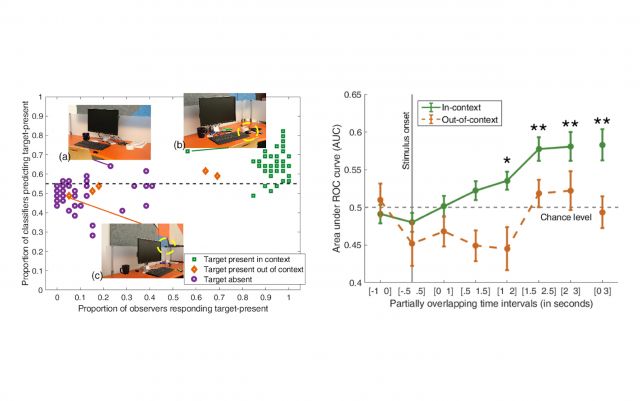New study in Experimental Brain Research finds EEG signatures of contextual effects during search
The study shows how context increases target-related neural activity during visual search

Former VIU lab member Amir Meghdadi, VIU PI Miguel Eckstein, and Psychological & Brain Sciences faculty Barry Giesbrecht (PI of the UCSB Attention Lab), have published a new article investigating how brain activity related to a target being searched for is altered by the surrounding scene context. When humans search for an object in a scene, surrounding "distractor" objects can have a great impact on the ability to rapidly find the "target" object. For example, if you are looking for a TV remote control, the positions of a TV, couch and/or coffee table serve to guide the search. Placing the remote control out of its normal context and away from the objects it typically co-occurs with slows visual search. In the new article, published in Experimental Brain Research, Dr. Meghdadi shows that brain activity signaling the presence or absence of a target (quantified using multivariate pattern classification) increases when the target appears at its expected location. The paper also shows how neural activity for a given image can be predictive of the frequency with which people will find the object in that scene. Contextual effects on EEG signals have previously been shown for simpler stimuli; Meghdadi's work shows how these contextual effects operate over more complex and naturalistic stimuli and tasks (i.e., the common real-world task of searching for real objects in real natural scenes), increasing our understanding of the neural underpinnings of search.